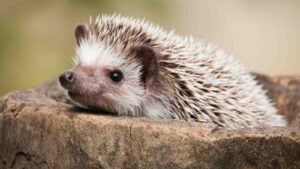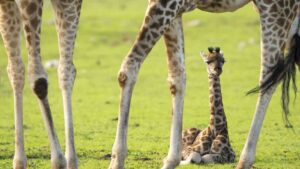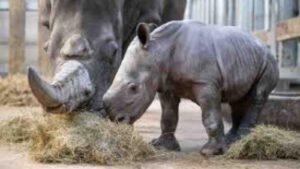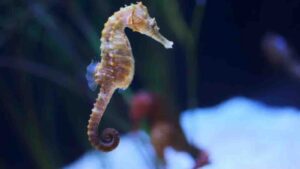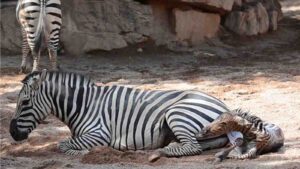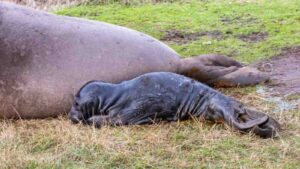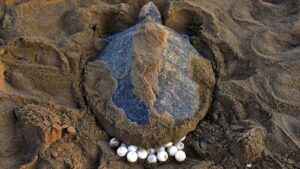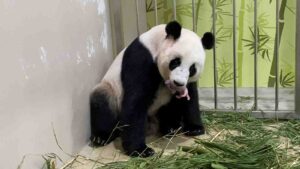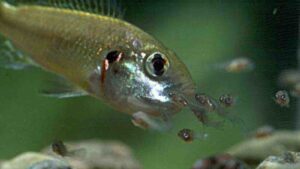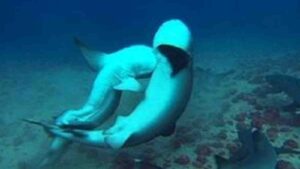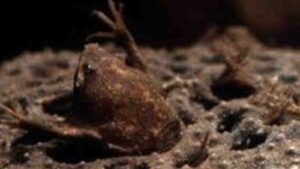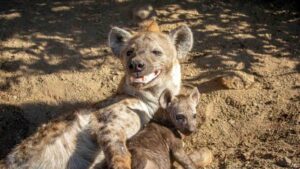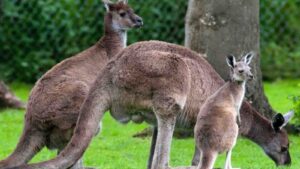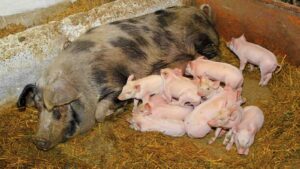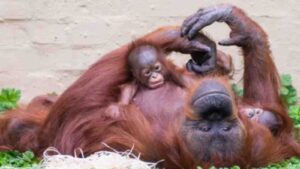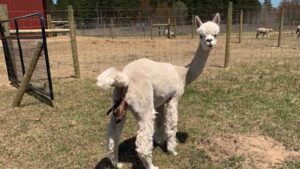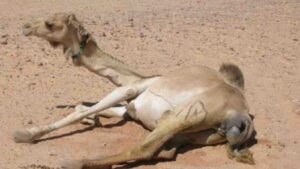Most Incredible Animal Births in the World
Summary
Ultimate Fact presents the Top 20 Most Incredible Animal Births in the World. Animals in the world have distinct ways of giving birth, and only our closest relatives in the animal kingdom do it like us. Depending on the species, […]

Ultimate Fact presents the Top 20 Most Incredible Animal Births in the World. Animals in the world have distinct ways of giving birth, and only our closest relatives in the animal kingdom do it like us.
Depending on the species, babies can come from male or female, and the process of laying and hatching eggs varies widely.
So let’s explore some unusual yet amazing animal births.
Video: Most Incredible Animal Births in the World
The Hedgehog:
When a baby hedgehog enters the world, it’s a tiny, blind ball of spikes waiting to be unleashed.
That’s because when it’s born, sharp protuberances-in-waiting are tucked just underneath the skin. Within a few hours of exiting its mother’s womb and as it’s surrounded by upwards of six siblings, a hoglet’s signature quills will start to make their debut.
Hoglets are blind for the first month of their lives, but that doesn’t stop them from wrestling with their brothers and sisters over a prime spot at mom’s milk bar. White as snow when they are born, the hoglets will also begin taking on the physical appearance of an adult hedgehog with the darkening of their quills.
Video: Most Incredible Animal Births in the World
The Giraffe:
A baby giraffe enters the world with a thought. We know giraffes are one of the most extreme animals in the world size-wise; females can reach heights pushing almost 5 meters.
It’s one of the reasons when, after a gestation period of upwards of 15 months, a baby giraffe gets welcomed into the world by being unceremoniously dropped 1.5 meters onto its noggin.
Much of a giraffe’s pregnancy is done as discreetly as possible since out in the wild and surrounded by predators it’s the smart move to avoid looking like a slow target carrying up to 68 kilograms of extra baby weight. Giraffe labor is not a quick process and can take days before the calf is born.
The next animal birth we are going to talk about is a sea otter!
The Sea Otter:
It’s a wet welcome for sea otter pups born on the water.
It’s a rule that is strictly adhered to, so in the rare event of twins being born after a seven-month gestation cycle, mom will pick the one she thinks is strongest and abandon the other.
Weighing in at approximately 2.25 kg, pups are born on the water covered in fur called ‘natal pelage’ that acts as a natural lifejacket and helps keep a pup afloat.
The Rhinoceros:
Thankfully for mother rhinos, their offspring have no horn when born.
After a gestation period that can last for up to 18 months depending on the species, an expectant rhino will give birth to a calf that can weigh anywhere from 25 to 45 kilograms. That’s one incredible birth.
With no horn at birth, the mother rhino acts like an all-natural tank for its child. Wild rhinos are known for being solitary animals, but the mother and calf form a tight bond in the three years they are together.
The Seahorse:
Besides the astounding visual aspect of a seahorse giving birth, seahorses like to think outside the traditional pregnancy box by giving males the honor of carrying their life partner’s eggs in a pouch on their belly.
The male seahorse has unfertilized eggs in this pouch, where he does one of his roles in the reproductive process by fertilizing them.
That pouch isn’t just about hauling eggs around, either. It’s an organ that acts like a thermostat, controlling temperature and water salinity, all while turning on genes that can carry nutrients and bolster his immune system.
The Zebra:
Like other animals with long gestation periods, a baby zebra enters the world a little clumsy but ready to get to the business of surviving in the wilds of Africa. When a foal is born after 11 to 12 months in its mother’s womb, its mom may still only be a youngster herself—zebras can become pregnant by the time they are a year old.
Foals are born, usually at night to avoid predators, with legs that are nearly the size of an adult zebra. Usually social animals that favor safety in numbers, a dam in labor will temporarily leave the herd to give birth.
The Seal:
After a 9-to-10-month-long pregnancy, a single pup is born. What comes next is an action that is critical to the survival of the pup—tthe mother spins around to smell its offspring and allow the pup to smell her.
If the pup passes the smell test, it can begin helping itself to milk from their mother. To help build up blubber, the milk is extremely fatty, and for one month following the birth, the pup feasts while its mother stays by its side and doesn’t indulge in any food at all.
The Marine Turtle:
Most species of marine turtles need to make a birthing pilgrimage to lay their eggs on land, and when you take an animal designed for life in the open water and stick it on a beach to deposit 100 eggs, it can be an extremely demanding process. Pregnant females drag themselves, usually under the cover of darkness, across their beach of choice to the high tide line.
After a month, the baby turtles begin to hatch, using the only tooth they will ever have in their life to break through their surrounding shell. After crawling out from under the sand, the hatchlings point themselves in the direction of the water and start the march to their underwater domain.
The Dolphin:
Dolphin mothers have their hands full from the time of conception and for years after their calf is born.
First off, dolphins don’t stick to a biological clock breeding season routine. Any time, any place—ddolphin lovin’ is always a possibility. After a 12-month gestation period, a calf weighing between 11 and 18 kilograms is born underwater, usually tail-first. Roughly 1.2 meters long, a dolphin calf comes out of the womb already pre-programmed to understand basic scientific principles.
Like any newborn, dolphin calves can be on the clumsy side. This can result in younger dolphins getting used to their blowhole misjudging distances to the water’s surface and sticking their whole head out for a breath of fresh air.
The Panda:
When spring rolls around, it’s time for Panda mating season.
A panda pregnancy can last anywhere from 100 to 180 days and result in one or two very tiny cubs being born in a den safe from the outside world. Despite an adult panda’s large size, its offspring can fit in the palm of your hand. Cubs usually weigh in at 85 to 142 grams, and another cute animal births in the wild.
After eight weeks, a cub will open its eyes and continue nursing over the year as it gains upwards of 34 kilograms of weight.
The Duck-billed Platypus:
The platypus is usually up there on any list of most incredible animals; it’s just that sort of creature. Just about everything about it screams rule-breaker. It’s a mammal, like us, which means that, among other things, it’s warm-blooded and the female nurses are young with milk.
But it’s also one of the very few members of the monotreme group of mammals, which means that it is oviparous: it is not born like you were; it was hatched from an egg.
The African Cichlid:
Most parents want what’s best for their kids and will do whatever it takes to help and protect them. Some parents take this to an extreme. Like, for example, the mouth-brooding African cichlids.
These fish figure the safest place for their young is in their mouths, so the mommy keeps them there after her eggs have been laid. Sometimes she even keeps them safe in her mouth after they’ve hatched, too. Now that’s helicopter parenting and also an amazing birth in the animal kingdom.
The Hammerhead Shark:
If you thought that immaculate conceptions are only for messiahs, prepare to be amazed. As it turns out, virgin births can also happen to wild animals like sharks. It’s called parthenogenesis, and it is more or less like giving birth to a clone of yourself because you combine the DNA from a couple of eggs to make one zygote with the right number of chromosomes and… poof!.
Pregnant with no daddy. There are species of geckos and lizards that do it and a few others, but the coolest example has to be the shark. Because, hey, we want to make sure there will always be shark week.
The Surinam Toad:
There isn’t an award for the worst animal in the world, but if there was, we’d have our winner right here. Why? One reason: the Surinam toad gestates its young in the flesh of its own back. It’s just gross. The eggs are laid, then the male shoves them into the mom’s back with his mouth, where she absorbs them into her skin.
There, the little brood of nasties grows for about four months before digging their way out again as fully formed baby toads. It’s just awful, and it makes my skin crawl.
Read More: People Who Were Incredibly Lucky
The Hyena:
Hyenas push their babies through their pseudo-penises.
So wild animals’ hyenas are weird. The females have a penis. Well, not really. Technically, it’s a clitoris that can grow up to almost 18 centimeters long, so it only looks like one. That she pees through. Totally not a penis, though, because there’s one thing that the female hyena does with her not-a-penis that actual penises absolutely cannot do: she gives birth through it. Yes, through it.
We won’t even get into how she gets pregnant in the first place, but just focus on how horrible it must be to squeeze a baby hyena out of your penis-like peepee hole. But as you weep for the mommy hyena, maybe share a year or two for the babies, over half of whom suffocate to death while trying to be born because the not-a-penis opening is so very small and poorly built for, you know, birthing through.
The Kangaroo:
Marsupials aren’t normal. Right from day one, these creatures have a strange life. It’s pretty easy, compared to suffocating in a pseudophallus, but still strange. A few months after conception, the embryonic kangaroo baby emerges from the kangaroo mommy’s womb like a little pink lima bean.
Deaf and blind and honestly not really done cooking, it has to find its way into mom’s pouch by sort of climbing, sort of wriggling up her fur. Once there, it can spend another few months suckling on the pouch nipple and growing into a proper little roo, which as we all know is called a joey.
The Pot-Bellied Pig:
Pot-bellied pigs are big enough, but when pregnant, they are enormous. They are so big their many teats drag along the ground, which is not the worst thing that will happen to those things: wait until the babies are born. Then it will be pure teat punishment.
Gestation is only about four months, after which up to a dozen hungry piglets will shoot out like fat little teat-loving projectiles. They need to be quick, not only to beat their siblings to the teats but also to avoid being squashed by their obese mother. Oh, and one more thing: teats.
The Orangutan:
Orangutans, the oldest animals in the world, are practically human. Genetically speaking, we have 97% of the same DNA. The similarities carry over into lots of things, including reproduction. They have a monthly menstrual cycle, they gestate babies for 9 months, and they deliver in more or less the same way as humans.
Except for one thing: they eat the amniotic sac right off their baby and lick them clean. And they don’t use epidurals, either, but mostly it’s the sac eating and baby licking that will clue you in that the lady in the next bed at the maternity ward is actually an orangutan.
The Llama:
Llamas are practically born ready to have babies, which are called crias. Female llamas can get pregnant as early as four to six months of age. Hell, they gestate for about a year, which means that a one and a-half-year-old llama could be pregnant for two-thirds of her young life. And then it’s nothing but trauma because a baby llama weighs somewhere between 8 and 18 kilograms at birth, which can’t be easy to deliver.
And after that? Your female llama is likely to do it all over again because the act of copulation makes her ovulate. So not only are llamas born ready, but they also spend most of their lives pregnant. Ouch.
Read More: 20 Largest and Longest Body Parts in the World
The Camel:
A baby camel has a flat hump when it’s first born, maybe to help with the whole squeezing out of its mother thing.
After all, it’s hard enough to deliver an 18-kiloton baby after being pregnant for over a year, especially one that comes out head and feet first and is ready to start walking within an hour. Having a hump get in the way would just be cruel.
Have you ever seen any birth in real life? Don’t forget to let us know in the comment section!
